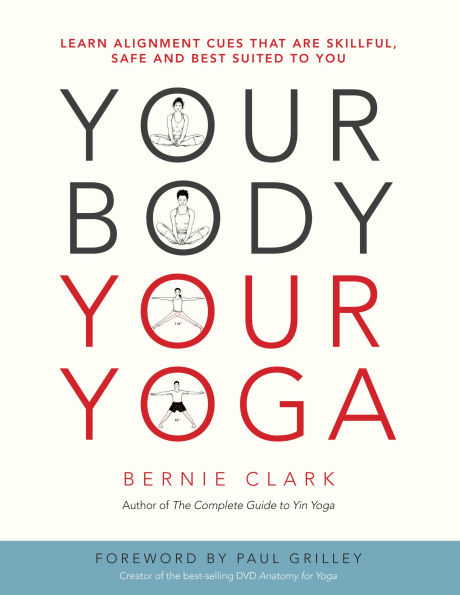Your Body, Your Yoga: Learn Alignment Cues That Are Skillful, Safe, and Best Suited To You
Your Body, Your Yoga goes beyond any prior yoga anatomy book available. It looks not only at the body’s unique anatomical structures and what this means to everyone’s individual range of motion, but also examines the physiological sources of restrictions to movement. Two volumes are provided in this book: Volume 1 raises a new mantra to be used in every yoga posture: What Stops Me? The answers presented run through a spectrum, beginning with a variety of tensile resistance to three kinds of compressive resistance. Examined is the nature of muscles, fascia, tendons, ligaments, joint capsules, bones and our extracellular matrix and their contribution to mobility. The shape of these structures also defines our individual, ultimate range of movement, which means that not every body can do every yoga posture. The reader will discover where his or her limits lie, which dictates which alignment cues will work best, and which ones should be abandoned. Volume 2 will take these principles and apply them to the lower body, examining the hip joint, the knee, ankle and foot, and will present how your unique variations in these joints will show up in your yoga practice.
1123402077
Your Body, Your Yoga: Learn Alignment Cues That Are Skillful, Safe, and Best Suited To You
Your Body, Your Yoga goes beyond any prior yoga anatomy book available. It looks not only at the body’s unique anatomical structures and what this means to everyone’s individual range of motion, but also examines the physiological sources of restrictions to movement. Two volumes are provided in this book: Volume 1 raises a new mantra to be used in every yoga posture: What Stops Me? The answers presented run through a spectrum, beginning with a variety of tensile resistance to three kinds of compressive resistance. Examined is the nature of muscles, fascia, tendons, ligaments, joint capsules, bones and our extracellular matrix and their contribution to mobility. The shape of these structures also defines our individual, ultimate range of movement, which means that not every body can do every yoga posture. The reader will discover where his or her limits lie, which dictates which alignment cues will work best, and which ones should be abandoned. Volume 2 will take these principles and apply them to the lower body, examining the hip joint, the knee, ankle and foot, and will present how your unique variations in these joints will show up in your yoga practice.
24.95
In Stock
5
1

Your Body, Your Yoga: Learn Alignment Cues That Are Skillful, Safe, and Best Suited To You
325
Your Body, Your Yoga: Learn Alignment Cues That Are Skillful, Safe, and Best Suited To You
325
24.95
In Stock

Product Details
| ISBN-13: | 9780968766538 |
|---|---|
| Publisher: | Wild Strawberry Productions |
| Publication date: | 04/12/2016 |
| Pages: | 325 |
| Product dimensions: | 8.50(w) x 10.90(h) x 0.70(d) |
About the Author
From the B&N Reads Blog
